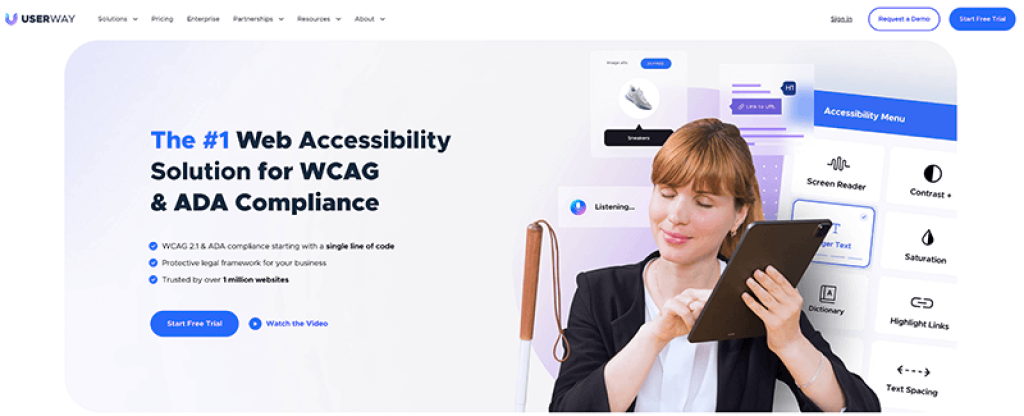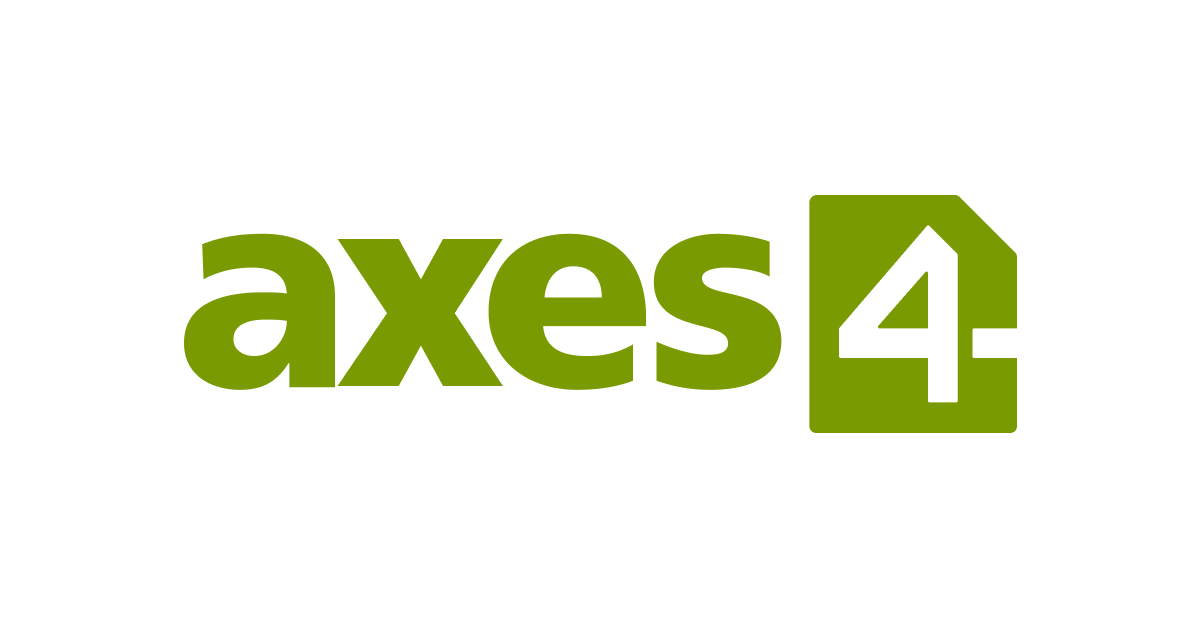
Top 5 PDF Accessibility & Remediation Tools
Making PDFs accessible transforms static documents into inclusive tools, ensuring every user can seamlessly interact with, understand, and benefit from the content, regardless of their abilities. By adding accessibility tags into PDF files, organizations can ensure seamless readability and navigation for users of screen readers and other assistive technologies. Let’s explore the top PDF accessibility & remediation tools that help organizations prioritize inclusivity.
More details for each of our top 5
PDF Accessibility & Remediation Tools
When selecting a PDF accessibility and remediation tool, it’s important to factor in the specific challenges and needs your documents present. Each tool will have its strengths, and the right choice can significantly enhance the accessibility and usability of your content. Here are 5 of the top PDF accessibility and remediation tools available:
Userway

See how UserWay can improve your PDF's accessibility
UserWay offers a tool that enhances the accessibility of PDFs, making them more readable for users with disabilities. Their tool focuses on ensuring PDFs are compatible with screen readers and assistive technologies, optimizing your documents for a wide range of accessibility standards.
allyant
See how allyant can improve your PDF's accessibility
Allyant offers efficient verification and remediation services to ensure compliance with Section 508, WCAG, PDF/UA 1.0, and HHS for various PDF documents and forms. Their service includes a detailed report guaranteeing complete compliance.
axesPDF for Word
See how axes can improve your PDF's accessibility
Want to transition from Word to an accessible PDF seamlessly? This tool empowers users to produce high-quality accessible PDFs quickly. Emphasizing the use of accessibility-optimized styles and templates, it removes the need for remediation and streamlines quality assurance.
PAVE
See how deque can improve your website's accessibility
This solution ensures your PDF documents are accessible without altering their visual layout. A reliable choice for those aiming to align with conventional reader programs. Available for personal use at no cost.
PDF Accessibility Checker (PAC)
See how PAC can improve your PDF's accessibility
This tool boasts a PDF/UA-check, a screen reader preview, a detailed tag tree view, and insightful document structure statistics. With its status as the first ISO 14289-1 (PDF/UA) validator, PAC 3 stands out for those aiming for superior PDF/UA compliance.
What is a PDF Accessibility Tool?
A PDF accessibility tool is a specialized software designed to evaluate, enhance, and ensure that PDF documents are universally accessible. PDF accessibility and remediation tools identify barriers within PDFs and offer solutions to make them compliant with accessibility standards.
What is the purpose of PDF accessibility tools?
The purpose of PDF accessibility tools is to act as connectors, ensuring that everyone, including those with disabilities, can smoothly navigate and understand content within PDFs. By refining the content's layout, improving compatibility with screen readers, and adhering to rigorous accessibility criteria, these tools transcend mere legal obligations to champion inclusiveness.
Understanding PDFs: Advantages and Disadvantages
In the mission to add accessibility into PDFs, it's imperative for organizations to capitalize on the inherent strengths of PDFs and tackle their limitations head-on. PDFs are widely used across industries and come with a set of distinct advantages and challenges:
The advantages of PDFs
1. Consistency: PDFs maintain their appearance across different devices and operating systems.
2. Security: They offer robust encryption and digital signature options.
3. Compression: PDFs can encapsulate high-quality visuals and text within compact file sizes without compromising content quality.
4. Interactivity: They support multimedia elements, such as hyperlinks, audio, and video, making them more dynamic.
The disadvantages of PDFs
1. Inherent Inaccessibility: Not all PDFs are created with inclusivity in mind, which can pose challenges for users with disabilities.
2. Complex PDF Remediation: Making non-accessible PDFs compliant can be intricate and require specialized tools.
3. Dependence on Creation Tools: The accessibility of a PDF often hinges on the software used to create it, and not all software prioritizes accessibility.
4. File Size Issues: While known for compression, heavily-loaded PDFs can be large and may impact load times and user experience.
By using PDF accessibility software, organizations can ensure that their digital content is universally accessible, catering to all users, regardless of their abilities.
Which sectors benefit from PDF accessibility tools?
PDF accessibility tools cast a wide net of beneficiaries, from industries bound by regulations to individuals advocating for inclusivity. Here are 6 key personas that can greatly benefit from PDF accessibility tools:
- Education Sector
- Government Bodies
- Healthcare Industry
- Legal & Finance Industries
- E-commerce Platforms
- Publishing and Media
Which personas benefit from PDF accessibility tools?
Different professionals experience unique challenges in content delivery. Let's examine six key personas and explore how PDF accessibility tools are invaluable in addressing their specific needs:
1. Accessibility Compliance Officers: PDF accessibility tools can validate, audit, and fix accessibility issues, ensuring compliance with standards like WCAG, ADA, and Section 508.
2. Digital Content Managers: PDF accessibility tools streamline the process of making PDF content barrier-free, enhancing the reach and usability of content across digital platforms.
3. UX/UI Designers: PDF accessibility tools provide feedback and guidelines on how to structure and present content in an accessible manner, ensuring optimal user experience for all.
4. Special Education Teachers: PDF accessibility tools allow teachers to create or modify PDFs to be more interactive and accessible, ensuring every student can engage with the content effectively.
5. Web Developers: PDF accessibility tools offer solutions to integrate accessible PDFs seamlessly into web platforms, ensuring consistent accessibility throughout the site.
6. Document Specialists: PDF accessibility tools ensure that even complex documents, with multiple layers and elements, remain navigable and readable by assistive technologies.
What to consider when choosing a PDF accessibility tool
Choosing the right PDF accessibility tools can feel like navigating a labyrinth. There are several tools and software solutions available that make checking PDF accessibility easy. The tools should seamlessly work as an extension of your inclusivity goals, ensuring content is universally accessible. Here are some key factors to consider when choosing a PDF accessibility and remediation tool:
1. Accessibility Standards Covered: The tool should comprehensively address renowned standards like WCAG, Section 508, and ADA. This ensures your documents are not only accessible but also compliant with globally recognized benchmarks.
2. Searchable Text: An essential feature. The tool should convert images of text or scanned documents into searchable and selectable text, enhancing the user experience for screen readers and other assistive technologies.
3. Use of Alt Text: Images, graphs, or other non-text elements need descriptive ‘alternative text'. The right tool will either auto-generate or prompt for Alt text, ensuring visual elements are accessible to those with visual impairments.
4. Bookmark Usage: For lengthy PDFs, navigating can be a challenge. The tool should support or encourage the creation of bookmarks, creating a structured, user-friendly roadmap for the document.
5. Content Mapping with Tags: A seamless reading experience is rooted in well-structured content. Tools should facilitate content tagging, mapping out headings, paragraphs, lists, and other elements, ensuring logical reading order for screen readers.
6. Table Arrangement and Best Practices: Tables can be accessibility nightmares if not done right. Your chosen tool should assist in creating tables with clear header information, row/column associations, and summaries.7. Things to Avoid: Background images and watermarks may seem harmless but can obstruct readability for some users. The best tools will flag such elements, guiding on best practices to ensure they don’t impede accessibility.
The importance of ensuring that everyone, irrespective of their abilities, can engage with and comprehend digital content is crucial. By making a concerted effort to utilize PDF accessibility tools, organizations can create accessible content that reaches a wider audience and reinforces the values of inclusivity and equality in our digital age.





